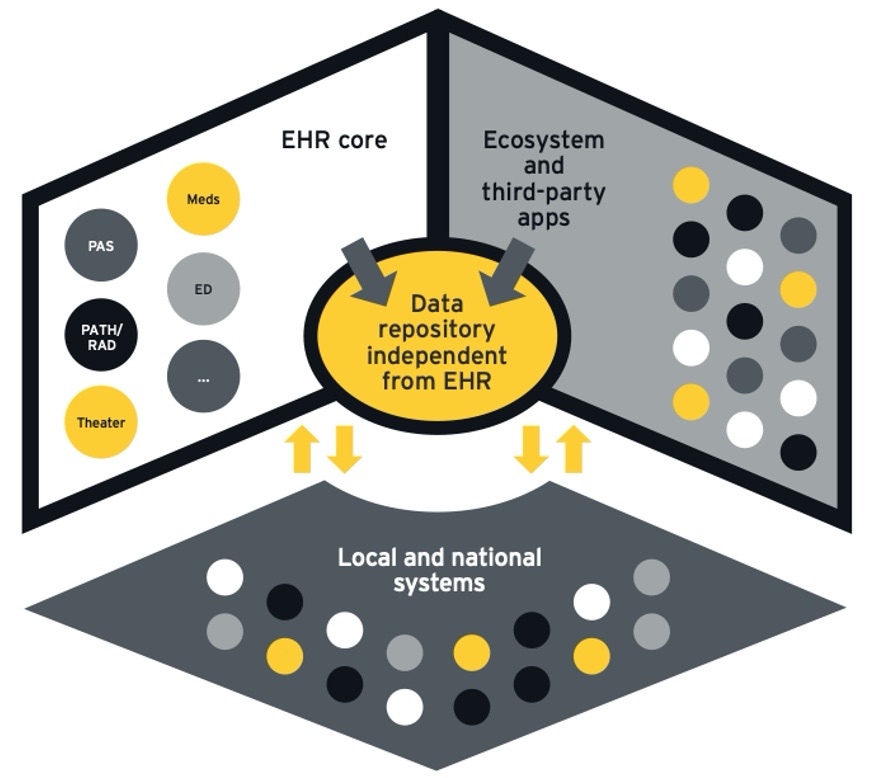Fonte: EY, How will you design information architecture to unlock the power of data?
A three-step approach to separating data applications.
In the previous article I explained the advantages of separating data from applications using a “data-centric” architecture based on openEHR. But how can healthcare companies complete this journey?
The first step is to create an independent data repository based on openEHR powered by the main systems. The current trend is to create FHIR repositories for data persistence by misusing a standard that was born for interoperability. Those who want to learn more can consult this article and also this one for a comparison between FHIR and openEHR.
The creation of an independent data repository allows you to take advantage of the advantages of openEHR even in the presence of legacy systems and their data in a closed and proprietary format.
The second step is the adoption of low-code platforms based on openEHR with which to digitize new processes, especially if these are transversal to multiple applications. The adoption of low-code platforms allows you to reduce development times and create native openEHR solutions capable of operating directly on the data repository, thus separating data from applications.
The forms thus created can also be “injected” within conventional applications and invoked through a simple context call. For example, if I need to consult or update a treatment plan, instead of creating this function in the application code (which does not manage it) and transferring the data to the openEHR repository, I could recall the form created with the low-code platform, thus reducing the complexity and effort required.
This is a logical extension of the “data-centric” concept, i.e. the creation of simple central data-based functions that can be incorporated into the systems used by healthcare professionals rather than requiring, as is usually the case, the implementation of additional functions.
The third step finally concerns the request to suppliers of openEHR solutions capable of operating on central data. It is a question of incentivising and promoting this practice perhaps through incentive or rewarding mechanisms in tenders, so as to stimulate the offer to adopt the “data-centric” paradigm. This is what is happening in some countries, for example in Northern Europe, where the offer of solutions capable of operating on central data is becoming widespread.
I like:
I like Loading…
